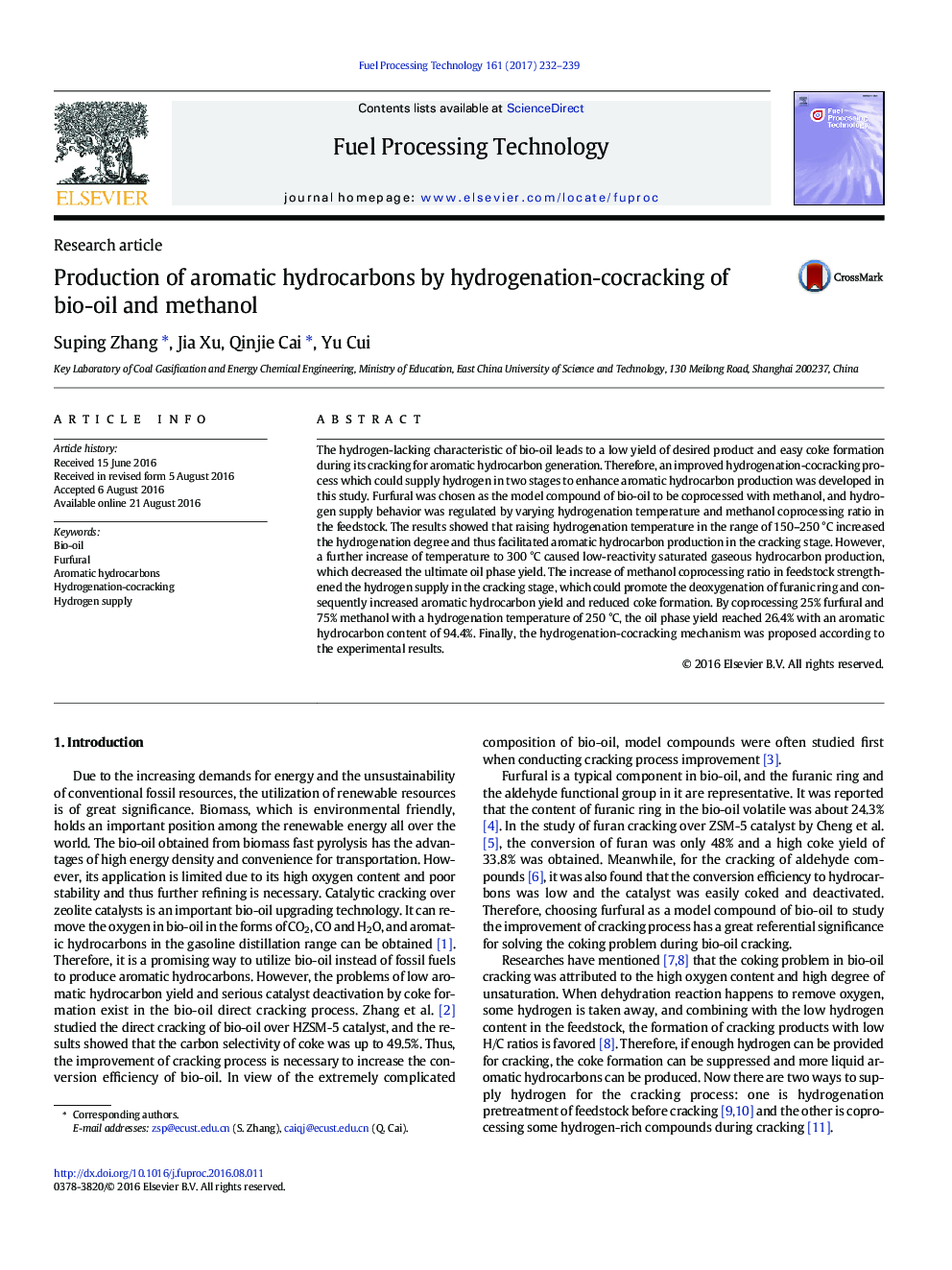| کد مقاله | کد نشریه | سال انتشار | مقاله انگلیسی | نسخه تمام متن |
|---|---|---|---|---|
| 6476524 | 1425385 | 2017 | 8 صفحه PDF | دانلود رایگان |
- Hydrogenation-cocracking was developed to enhance aromatic hydrocarbons production.
- Hydrogen supply was regulated in both hydrogenation and cocracking stages.
- Desired aromatic hydrocarbons were obtained with a low coke yield.
- Reaction mechanism of hydrogenation-cocracking was proposed.
The hydrogen-lacking characteristic of bio-oil leads to a low yield of desired product and easy coke formation during its cracking for aromatic hydrocarbon generation. Therefore, an improved hydrogenation-cocracking process which could supply hydrogen in two stages to enhance aromatic hydrocarbon production was developed in this study. Furfural was chosen as the model compound of bio-oil to be coprocessed with methanol, and hydrogen supply behavior was regulated by varying hydrogenation temperature and methanol coprocessing ratio in the feedstock. The results showed that raising hydrogenation temperature in the range of 150-250 °C increased the hydrogenation degree and thus facilitated aromatic hydrocarbon production in the cracking stage. However, a further increase of temperature to 300 °C caused low-reactivity saturated gaseous hydrocarbon production, which decreased the ultimate oil phase yield. The increase of methanol coprocessing ratio in feedstock strengthened the hydrogen supply in the cracking stage, which could promote the deoxygenation of furanic ring and consequently increased aromatic hydrocarbon yield and reduced coke formation. By coprocessing 25% furfural and 75% methanol with a hydrogenation temperature of 250 °C, the oil phase yield reached 26.4% with an aromatic hydrocarbon content of 94.4%. Finally, the hydrogenation-cocracking mechanism was proposed according to the experimental results.
164
Journal: Fuel Processing Technology - Volume 161, 15 June 2017, Pages 232-239
